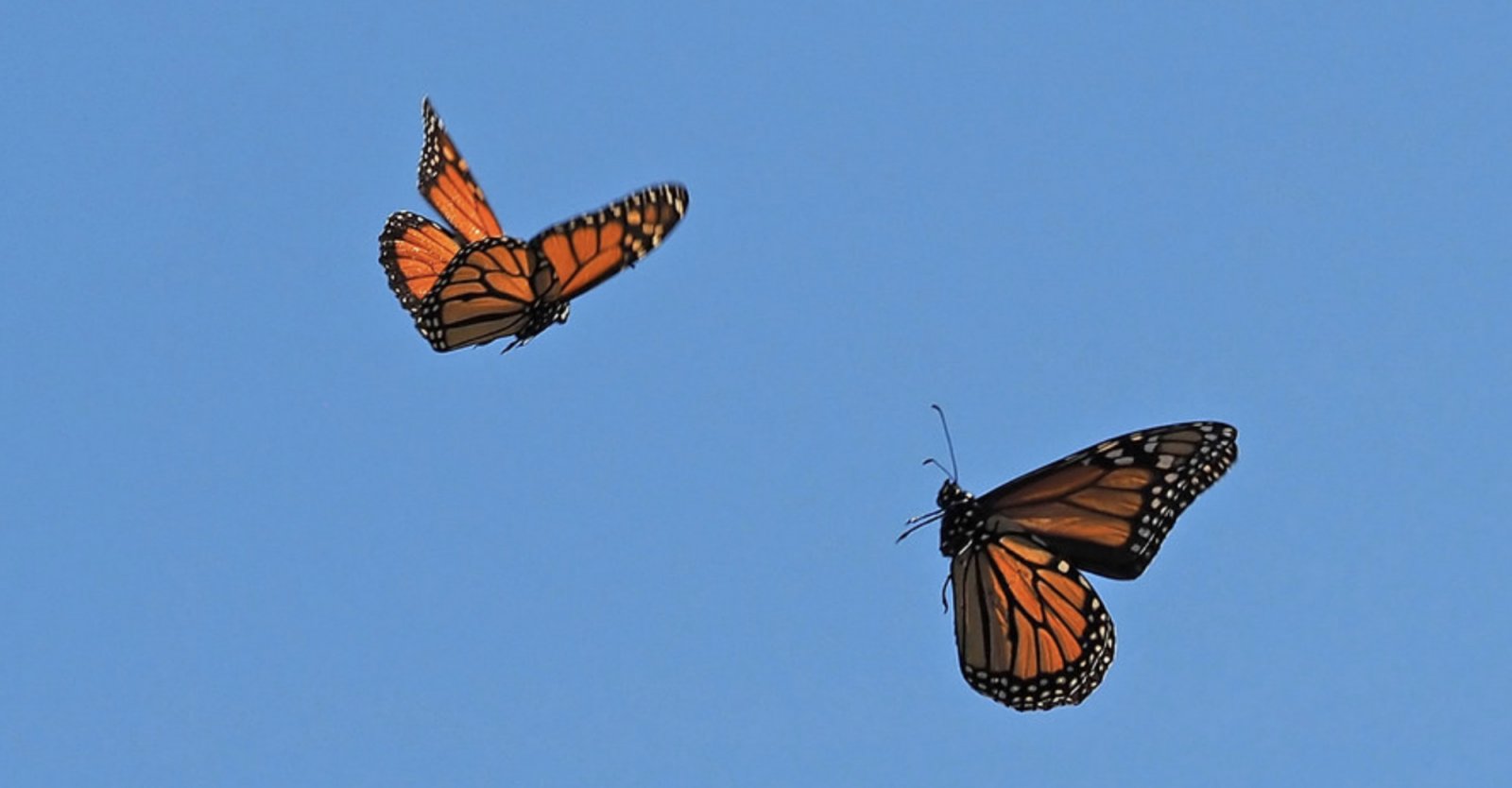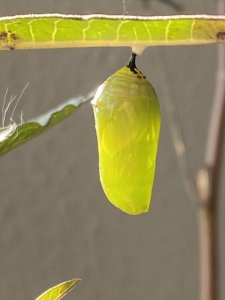
Helping monarchs in Marin County
From planting native milkweed to tracking sightings, here’s what you can do to help these iconic butterflies
It’s hard to imagine that one of the most iconic creatures in the West is on the verge of disappearing. But that’s exactly what could happen, as numbers of monarch butterflies here in the West have plummeted. How much has the population dropped? Comparing annual wintertime surveys, taken at key sites along the coast, the decline has been staggeringly swift. In 1997, about 1.9 million monarchs were counted in California at key overwintering sites. In 2018, 200,000 were counted, and in 2020, the count nosedived to only 1,941 individuals.
Reports of the catastrophic decline made national news, and, seemingly miraculously, California’s numbers bumped up to 250,000 in 2021, which experts say could be due to increased planting of native milkweed, a critical host plant for monarch caterpillars.
Understanding monarchs and what they need

The striking orange and black butterflies here in Marin (and throughout the Western states) are known as Western monarchs. Populations east of the Rockies are known as Eastern monarchs. These two distinct groups, though genetically identical, follow separate migration routes. According to researchers, all monarchs use environmental cues, such as changes in daylight, to know when to leave their wintering grounds.
Eastern monarchs overwinter in the mountainous regions of central Mexico. In early spring, they head north and east into New England, returning to Mexico for the winter. Western monarchs overwinter in western Mexico and along the California coast, often returning to the same groves of trees in places like Pismo Beach, Pacific Grove, Bolinas, and Muir Beach. Some monarchs migrate further to Nevada, Oregon, Utah, Wyoming, and Montana. During this migratory period, several more generations of monarchs are born.
It’s an incredible feat that these delicate butterflies survive these remarkable migrations. But one thing they can’t survive is the lack of native milkweed species. Monarch caterpillars feed exclusively on milkweed leaves, making healthy milkweed populations a critical part of the species’ survival. Unfortunately, habitat destruction has dramatically impacted native milkweeds here in the West. Without adequate native milkweed, monarchs can’t properly reproduce and thrive.
Planting native milkweed

Fortunately, we can all plant milkweed in our gardens—but it has to be the right native species. Tropical species can grow here, and may have showy blooms, but they are known to host a parasite that infects monarchs. Tropical varieties can also have growing cycles which can conflict with the monarchs’ natural cues for triggering migration.
Instead, researchers say we should focus on planting narrowleaf milkweed (Asclepias fascicularis), our local species of milkweed that grows best in wet sunny areas such as swales.
Where you plant milkweed is also important. Recent research shows that it’s not helpful to plant milkweed within five miles of the Northern California coast. That’s because milkweed has never historically grown in this narrow coastal band, so planting native milkweed along the coast could draw monarchs away from their traditional overwintering grounds and disrupt their habits.
We can also help monarchs—and other native insects and animals that depend on nectar as food—by planting native nectar plants. For suggested plants and tips on attracting butterflies and other wildlife, see this article on planting butterfly gardens from the California Native Plant Society.
Some local nurseries may have native milkweed plants for sale, but be sure to check species before you buy. To grow milkweed from seed, watch this helpful video from the Theodore Payne Foundation, a nonprofit organization that promotes understanding and protection of native plant landscapes.
Help track Western monarchs
If you see a monarch outside of overwintering groves, or you spy caterpillars or a chrysalis, take a photo. Share details using the iNaturalist app or website. Also share images on Facebook, Instagram, and NextDoor. Tag posts with #SaveWesternMonarchs.
For a fascinating analysis of the 2021 Western monarch count, check out this article on PBS’s Nova website. Additional resources include:
- Xerces Society “Western Monarch Call to Action”
- Monarch Joint Venture
- U.S. Fish & Wildlife Service monarch initiative
—reported by FOCC naturalist Jerry Coe

